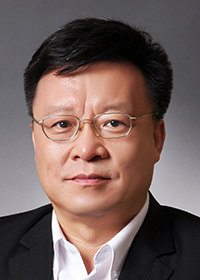 |
Professor and Director, Faculty of Information and Engineering SciencesPeking University, ChinaMember, Chinese Academy of Engineering |
Wen Gao now is a Boya Chair Professor at Peking university. He also serves as the president of China Computer Federation (CCF) from 2016
He received his Ph.D. degree in electronics engineering from the University of Tokyo in 1991. He joined with Harbin Institute of Technology from 1991 to 1995, and Institute of Computing Technology (ICT), Chinese Academy of Sciences (CAS) from 1996 to 2005. He joins the Peking University since 2006.
Prof. Gao works in the areas of multimedia and computer vision, topics including video coding, video analysis, multimedia retrieval, face recognition, multimodal interfaces, and virtual reality. His most cited contributions are model-based video coding and face recognition. He published seven books, over 220 papers in refereed journals, and over 660 papers in selected international conferences. He earned many academic awards including eight National Awards for Science, Technology, and Invention. He is a fellow of IEEE, a fellow of ACM, and a member of Chinese Academy of Engineering.
Digital Retina: A New Feature Camera for Smart City
A city brain is the central decision system in the smart/intelligent city system. In this talk, I will present several grand challenges for a smart/intelligent city brain, and then give our solution which called digital retina, a new-generation evolutional city eye, or new feature surveillance device/camera. Like human eyes, the new feature surveillance camera not only own the function of video coding for storage and offline viewing, but also can perform feature coding for pattern recognition and scene understanding in real time and higher accuracy. Towards this end, I will share some of our recent achievements, including but not limited on background-modeling-based surveillance video coding, visual feature compression for visual search, joint R-D and R-A optimization, as well as software defined image quantization. Some standards are also available for this new feature surveillance device, such as IEEE 1857.4/AVS2 and MPEG CDVS/CDVA. With this device, we can expect a key step of evolution towards the massive artificial visual system for smart/intelligent city..